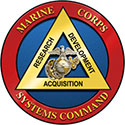IT is one of the few business capabilities where every employee has their own experiences as a consumer outside the workplace, leaving the IT department constantly subjected to second-guessing of the effectiveness, costs and even the technical approach to its services.
Maintaining the ability to plan and execute in an orderly manner, instead of reacting to every manager’s demands, requires cost and performance transparency: clearly-defined objectives and standards, widely-published reports on delivery to standard, and regular comparison with other similar entities. All of that requires a structured set of IT business processes, formerly considered to be an IT architecture but now often called a Technology Business Model.
With ongoing engagements in several organizations, Peridot was one of the early adopters in the use of the Technology Business Model, both in the full form envisioned by the Technology Business Council www.tbmcouncil.org and in the modified versions used in OMB and DoD IT Capital Planning processes. Our TBM staff members have even deeper experience in cost analysis and bench-marking, with backgrounds at major advisory firms and consultancies. We can assist customers in understanding the state of their IT enterprise using their current data (such as it may be) and identifying areas for programmatic improvement or defining how better data can be obtained.
We can advise on the need for tool-sets, or advise customers to refrain from buying tools: we have advised one of largest customers to remain with Excel-based analysis while data sources are stabilized before making substantial product investments. We can assist with selecting the right tool when appropriate, and we can guide a solution implementation for a tool that the customer selects.
To that end, while remaining tool-agnostic, we have established relationships with multiple vendors so that our staff is qualified on tools such as Apptio and ServiceNow.
Key activities in our engagements include:
- Identifying key management decisions and processes and the data needed to support them
- Mapping existing or future business models and investments to a Technology Business Model and/or architectural framework
- Identifying where the customer data resides and how to accumulate it for integrated analysis
- Analyzing internal and external data to assess the cost and effectiveness of existing services and planned future directions
- Identifying the core needs for any automated solutions, developing business cases, and selecting an appropriate tool-set
- Implementing long-term data collection, analysis and display processes and tools
- Integrating governance, architecture, program management, financial and acquisition processes into a seamless management framework and culture





